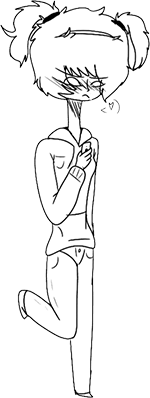Body Dysmorphic Disorder (BDD)
Body dysmorphic disorder (BDD) is an anxiety disorder related to body image, where a person spends a lot of time worrying about flaws in their appearance. These flaws are often unnoticeable to others.
People of any age can have BDD, but it’s most common in teenagers and young adults – it can affect all genders.
Having BDD does not mean that you are vain or self-obsessed! If can very incredibly upsetting and have a big impact on your life.
Signs of BDD
BDD is a condition where a person spends a lot of time worried and concerned about their appearance. A person with this disorder may:
- worry a lot about a specific area of your body
- spend a lot of time comparing your looks with other people’s
- go to a lot of effort to conceal perceived flaws
- pick at your skin to make it ‘smooth’
BDD can seriously affect your daily life, including your work, social life and relationships.
BDD can also lead to depression, self-harm and even thoughts of suicide.
Where to turn for help
You should visit your GP if you think you might have BDD. They’ll likely ask you a few questions about your symptoms and how they affect your day-to-day life.
A GP may refer to a mental health specialist for further assessment and treatment, or you may be treated through your GP. The symptoms of BDD can get better with treatment.
You may be referred for a type of talking therapy called cognitive behavioural therapy (CBT) or recommended you start a dose of antidepressant medication, called selective serotonin reuptake inhibitors (SSRIs).
